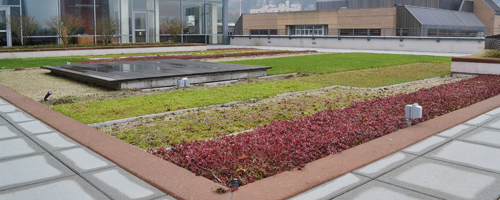ASPSU aims to double voter turnout
With this year’s election rapidly approaching – polls open Monday, March 6 – student government has set out with an ambitious goal: double voter turnout.
Last year Portland State broke its own record for student voter participation in the annual student election: a dismal 10 percent. In past years, the figure has been as low as 6 percent.
“Student government needs to make a better attempt to inform and educate students about issues and the importance of voting,” said Erin Devaney, president of the Associated Students of Portland State University. “To encourage students to vote this year, we are setting up tables around campus, not supporting a certain running party, but advocating the act of voting itself and its importance.”
Many would attribute the lack of ballot-dropping among students to the fact that PSU is largely a commuter school, and that student elections are not a pressing issue to the fraction of students who are enrolled in only one or two classes and live far from campus. Students also rationalize a non-voting mindset by thinking that those elected into office and the issues involved will not affect them.
“Every university has similar results as PSU, and I don’t think that it’s “voter apathy” causing such low numbers,” Devaney said. “We find that most of the students who do vote in the elections are those involved in student government, and that’s what we hope to change.”
Francis Porter, a third year English major at PSU, expressed his concerns with the lack of voter enthusiasm among students. “It’s an odd thing that so many people don’t care or make the time to vote. Students don’t realize that these people will be making decisions that affect all of us,” he said. “Then, most of the time, students end up complaining about school policy; the policies that they could have helped shape if they had voiced their opinion.”
The ASPSU student government elections are held during the second week of March, Students vote using an online ballot system, accessible through Banweb, the website that students use for registering for classes. Voting begins March 6 and continues until Friday, March 10.
Student government provides an election guide with profiles of all the candidates, accessible at www.aspsu.pdx.edu/elections.
While voter turnout has been consistently less than 10 percent of students for the past several years, the number of voters has been steadily increasing. In 2002, just 1171 students, or about 6 percent voted. In 2003, 1,999 students turned out. However, the official election that year had to be repeated in April, after the March election was cancelled after a free-speech scandal, which may have reduced voter turnout. Last year’s turnout of 2,432, about 10 percent, was the highest turnout in over a decade.
Portland State is not alone in struggling with low voter turnout numbers. Voter participation at the University of Oregon in their last student election was 14 percent, 2 percent higher than the previous year, and the Associated Students at UO hope for even higher numbers this year.
A nationwide survey of youth taken by Oregon State University’s research team in 2000 found that when asked 86 percent of youth believe that more people would vote if they could do so over the internet or the World Wide Web, and that 93 percent of youth think that more people would vote if they could do so at school or work.
Oregon State University first used the internet as a place for students to cast their vote for student elections in 1999. That year voter turnout was at 12 percent, a 4 percent increase over 1998’s student participation.



